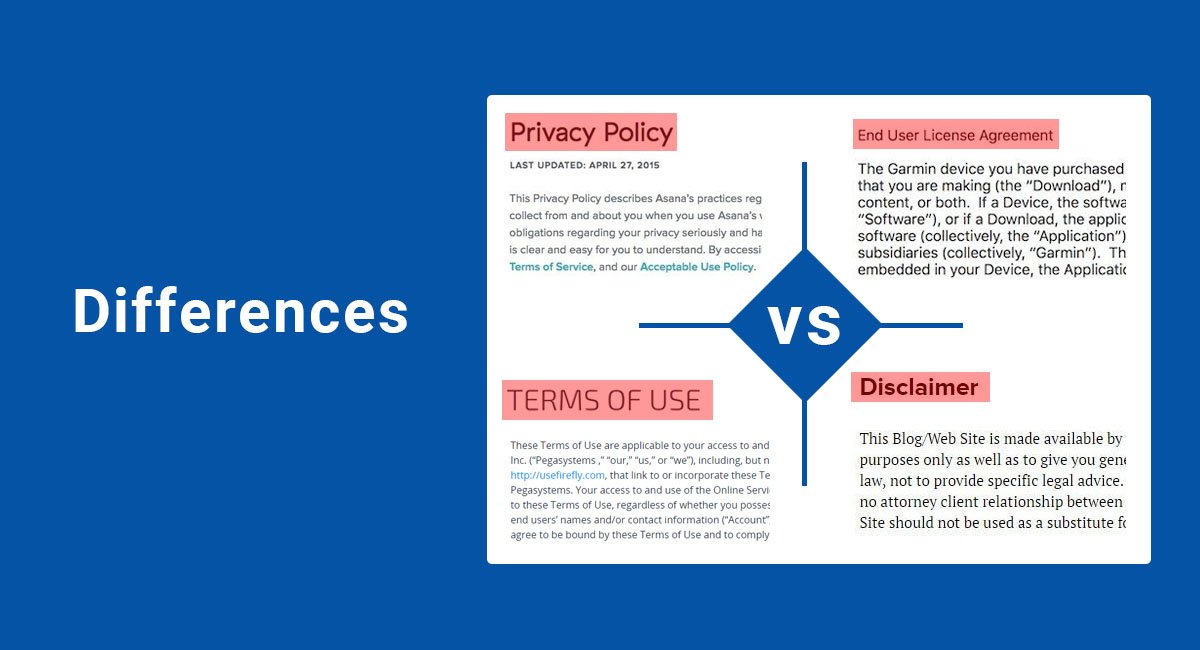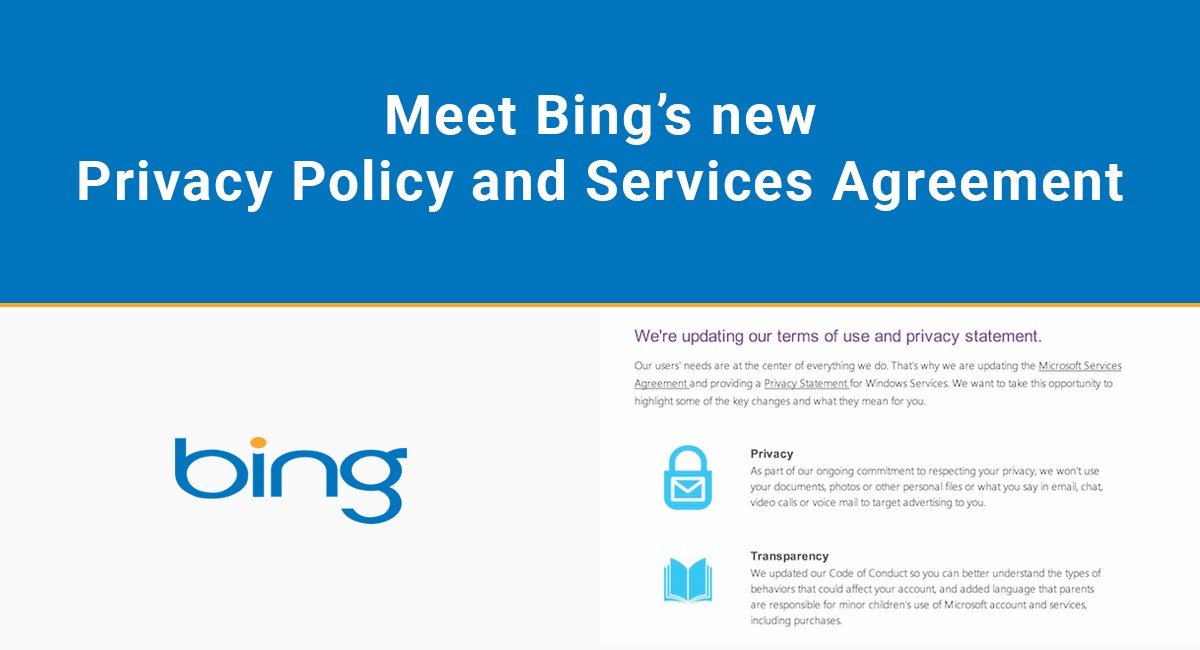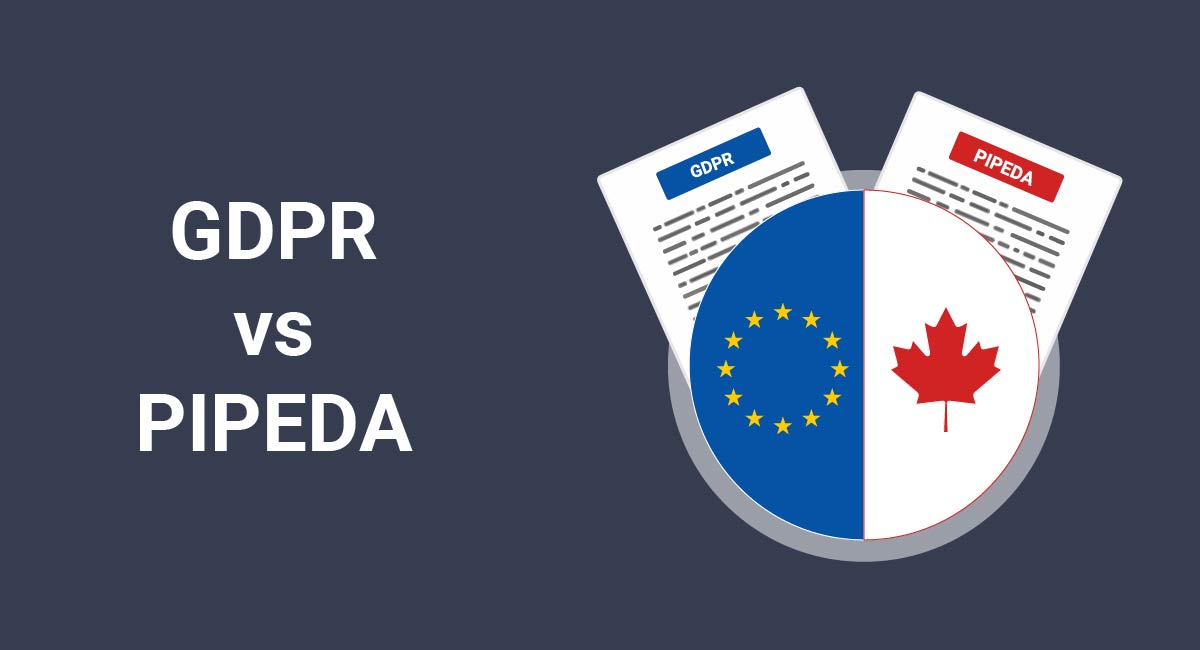While you may not require all of these common legal agreements for a website and/or mobile app, it's a good idea to be familiar with the agreements and the differences between them.
Here are the differences between these essential legal agreements.
Privacy Policy vs. Terms & Conditions
The main difference between a Privacy Policy and a Terms & Conditions agreement is the purpose of each agreement.
The Privacy Policy agreement describes the types of data you collect from users, how you collect it, and what you do with it. If you collect data that can identify an individual, you're legally required to have a Privacy Policy on your website or app and make it conspicuous to your users.
A Privacy Policy is a required document if you do business in the state of California, US, U.K., Australia or Canada plus many other countries in the world.
The Terms & Conditions is also known as "Terms of Use," "Terms of Service," and occasionally, "User Agreement,"
The Terms & Conditions agreement is a contract between you and the user that indicates the requirements, limitations, and standards involved in using your website or mobile app.
This type of agreement includes rules and guidelines on payment and subscriptions, community behavior, copyright protection, and circumstances where you're allowed to terminate user's accounts.
Unlike the Privacy Policy agreement, the Terms & Conditions is not required by law. However, it's not recommended that you release your website or mobile app without this agreement.
Both agreements can be placed at the bottom of your website through links. This is sometime called browsewrap.
Niantic Labs, which created the popular Pokemon GO, takes this approach:

Pokemon GO is a mobile game. The legal agreements for this mobile game are available through the Apple App Store or Google Play profile pages.
The Privacy Policy agreement of Pokemon GO game is directly labeled because it's required by law:
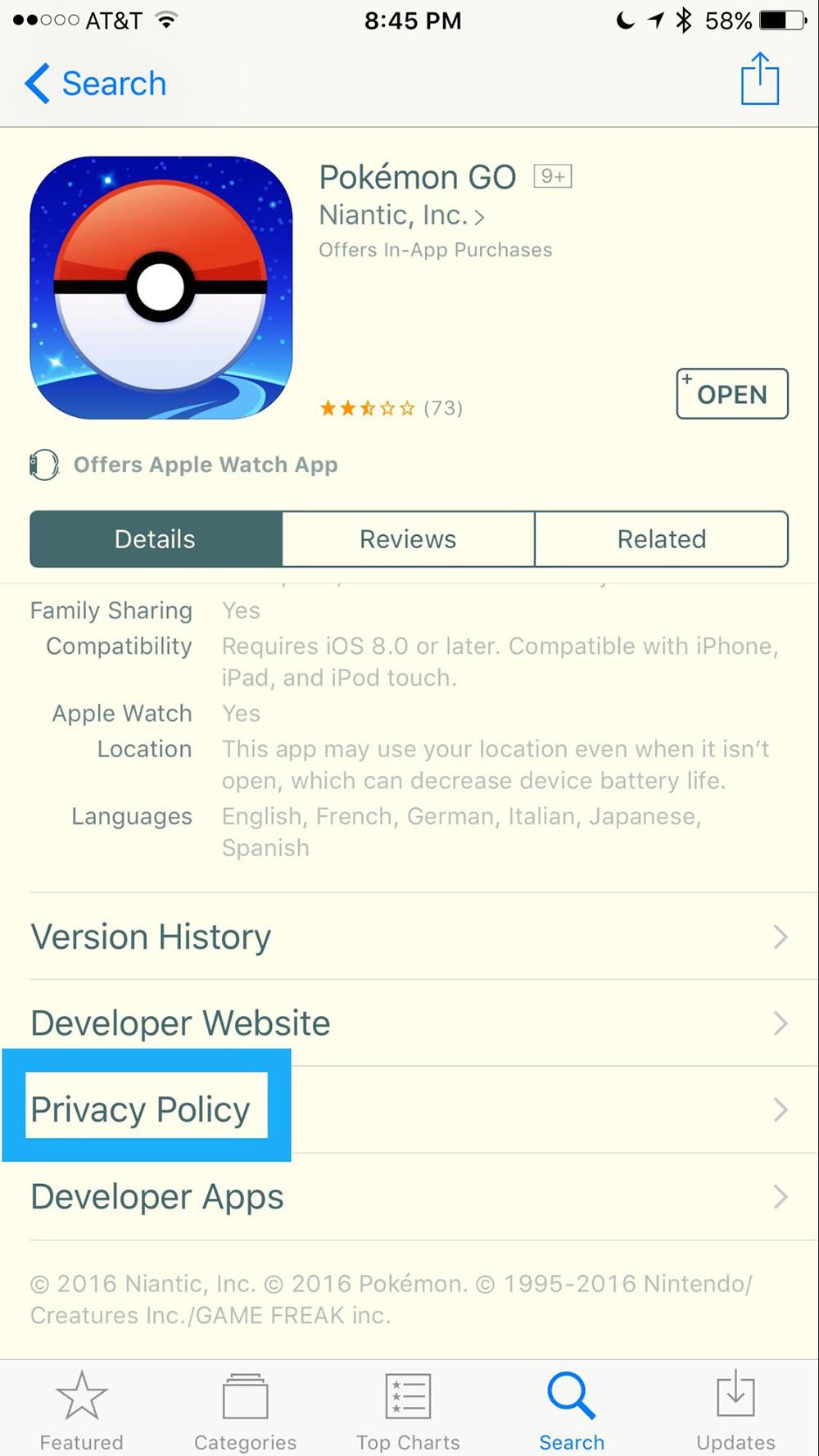
That link takes you straight to the text of the agreement hosted on the website:
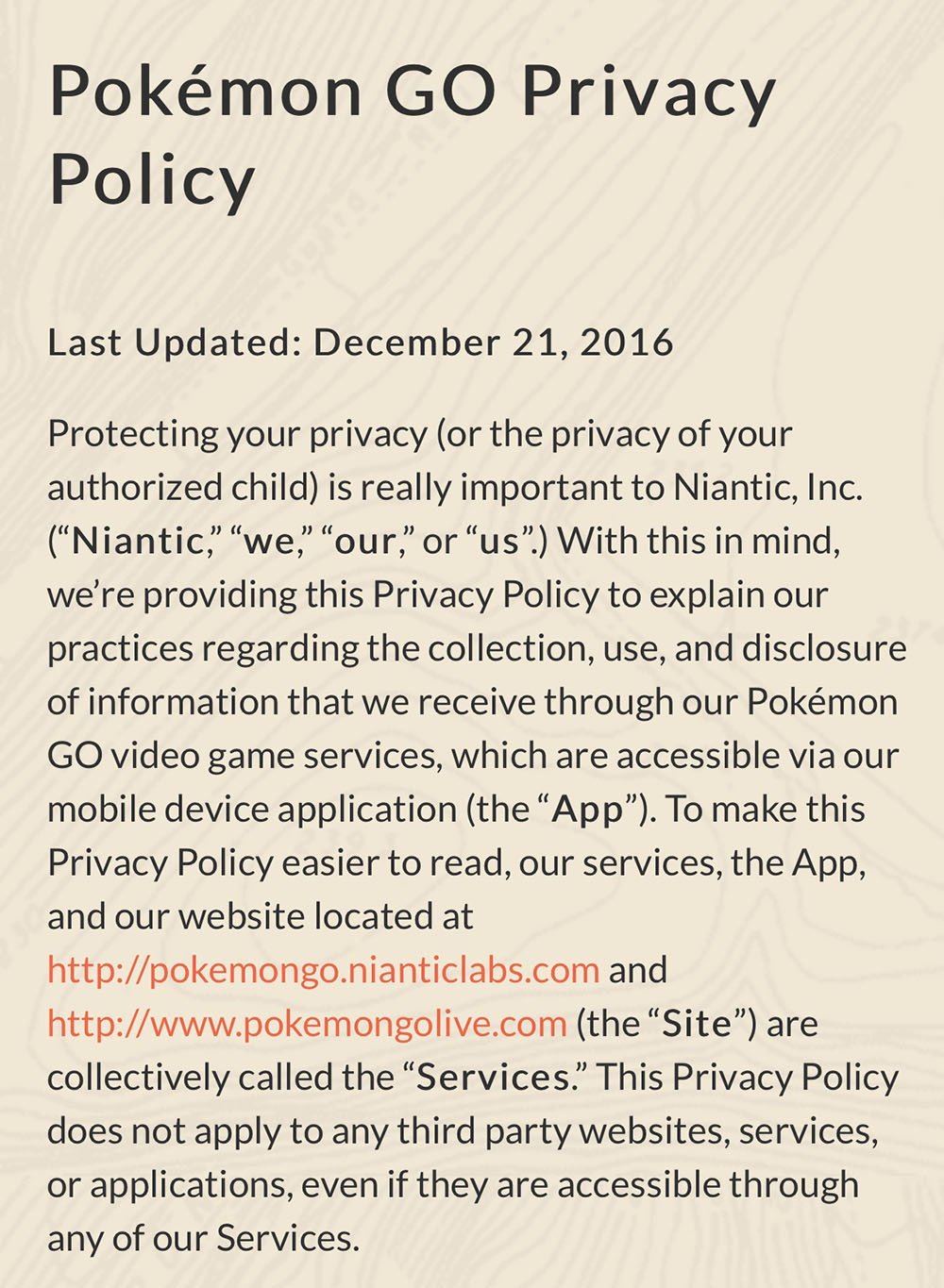
The Terms & Conditions of Pokemon GO (called Terms of Service by Niantic) is located with a bit more work. Like most mobile apps, it starts with the link to the "Developer Website" which is available on the App Store or Google Play profile page:
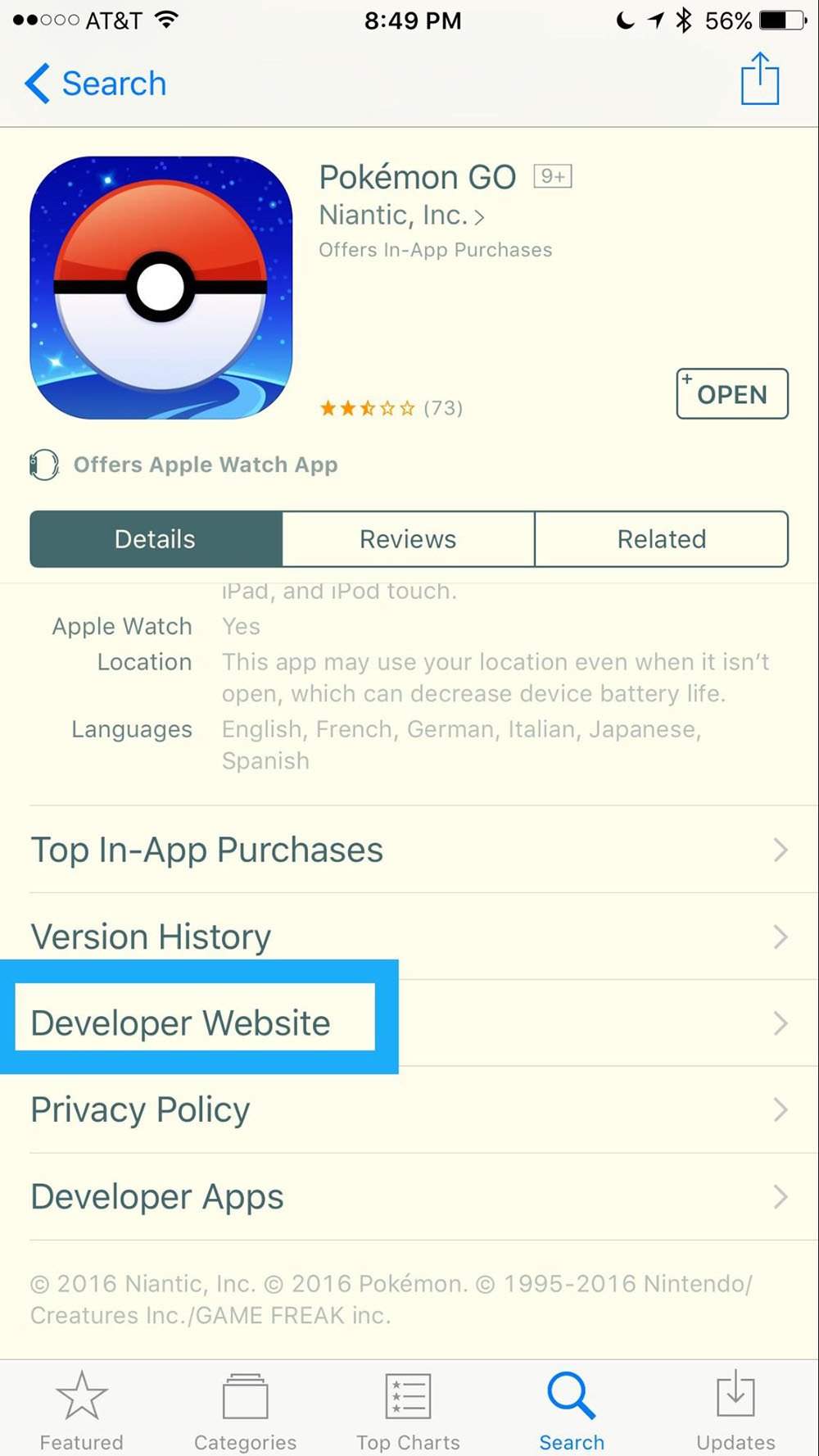
Once there, you access the mobile website of Pokemon Go and then you must click the link to the Terms & Conditions agreement, just as you would on a computer, usually placed in the footer of the website:
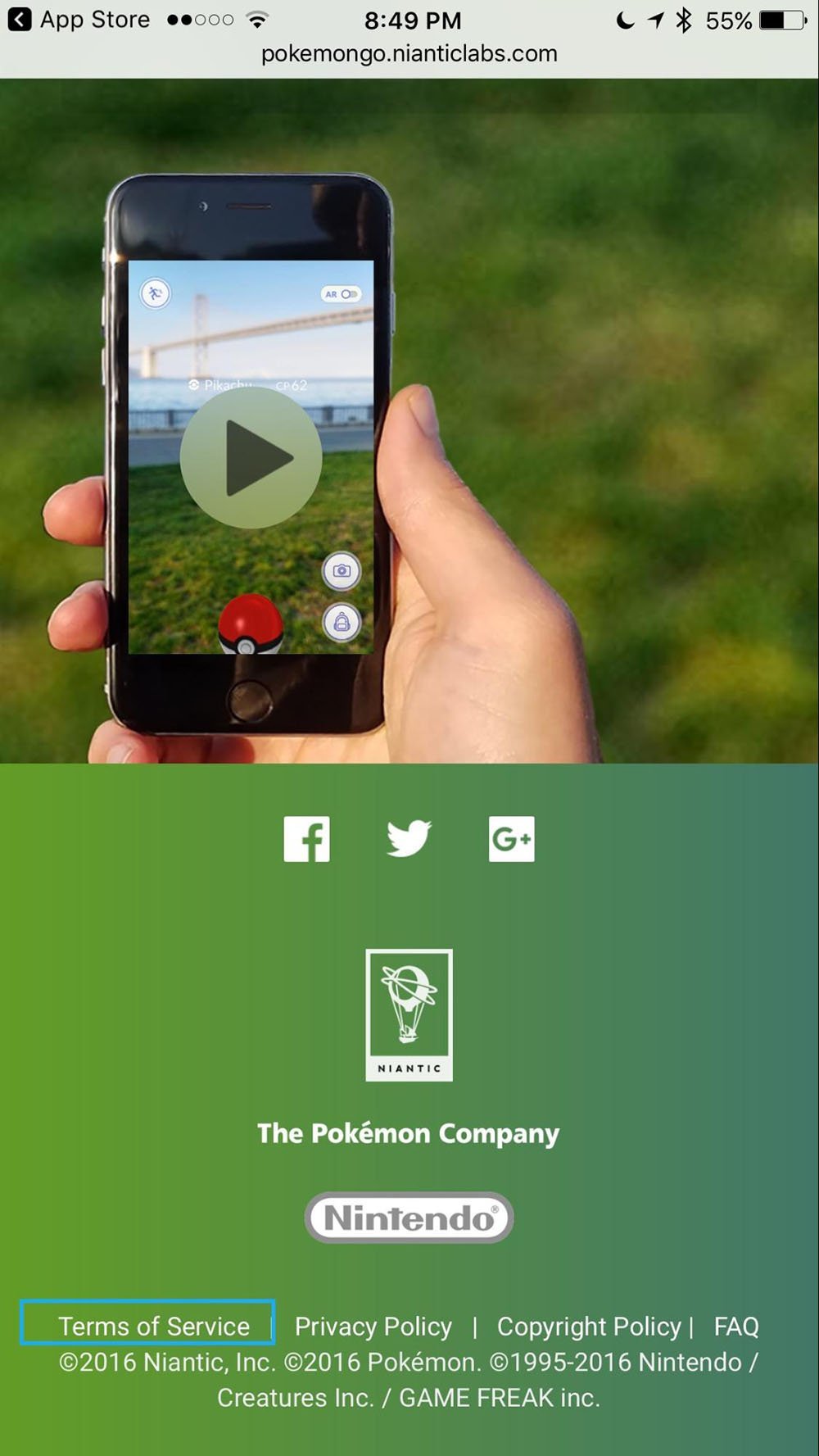
The link will open the Terms & Conditions agreement of Pokemon GO.

Terms & Conditions vs. Disclaimer
The difference between a Terms & Conditions agreement and a Disclaimer is the liability they address.
Terms & Conditions are basically rules of use between you and your users.
Disclaimers are more specific and address particular types of liability. While disclaimers are present in a conspicuous place on your website or mobile app, disclaimers normally do not stand alone.
A Terms & Conditions may contain general disclaimers.
For example, The Guardian adds in this general disclaimer of liability that's actually broad in scope. While this is disclaimer content, this does not turn the Terms & Conditions into a disclaimer:
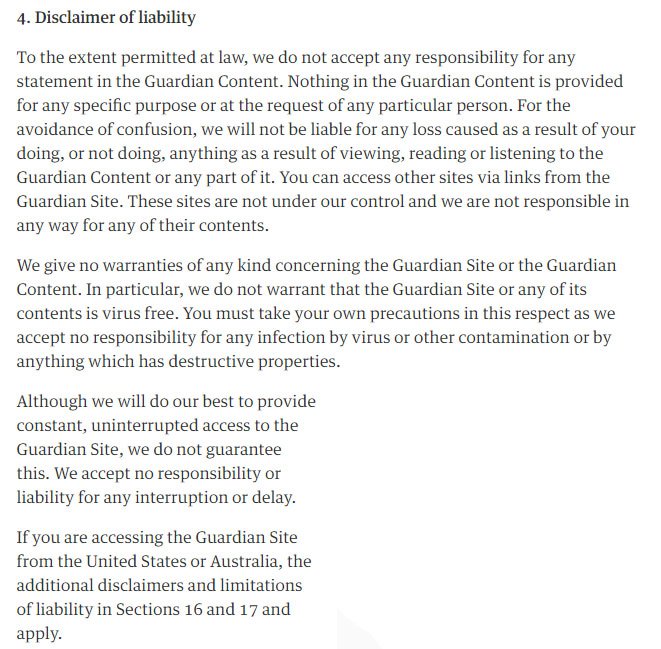
Disclaimers stand alone and exist to communicate to the user that the business is not legally responsible for the information on the website (as an example).
You'll most likely to find that disclaimers are common on websites or app that deal with specialized information.
Terms & Conditions vs. EULA
The difference between a Terms & Conditions agreement and EULA agreement is how they address license of use.
While the End-User License Agreement (EULA) establishes the right for users to use your software and establishes rules for that use, the Terms & Conditions agreement (T&C) is more extensive.
You need a EULA when you sell a software or app because it gives the user the right to download your product and use that copy of the software.
Mobile apps or software apps that operate primarily on cloud systems and are more like SaaS apps often work well with just a Terms & Conditions agreement.
You normally encounter the EULA agreement when you download a software application.
When you download Adobe Acrobat Reader DC on your PC, you're immediately presented with a welcome screen that includes links to the EULA agreements of the Adobe Acrobat Reader:
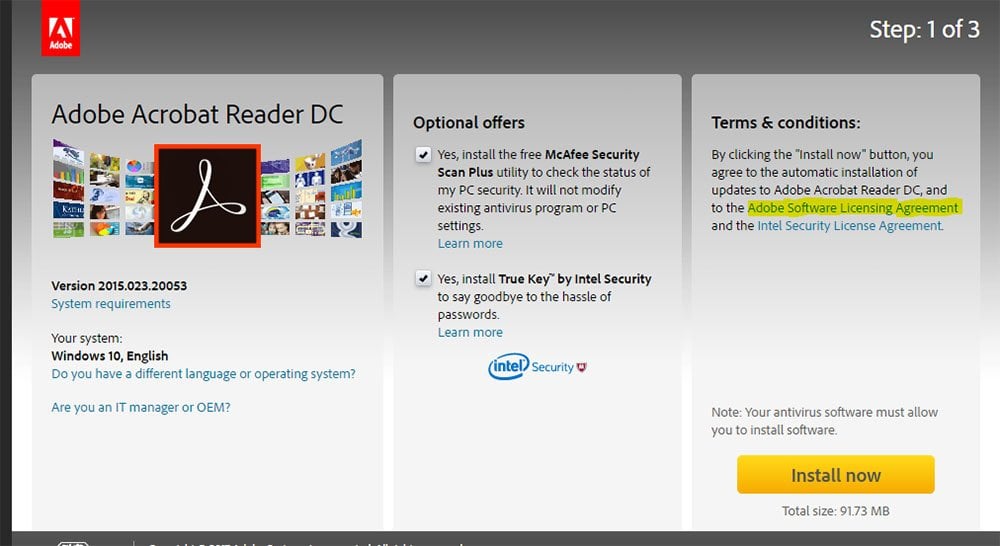
When you click on that link, it gives you the EULA in a pop-out window:
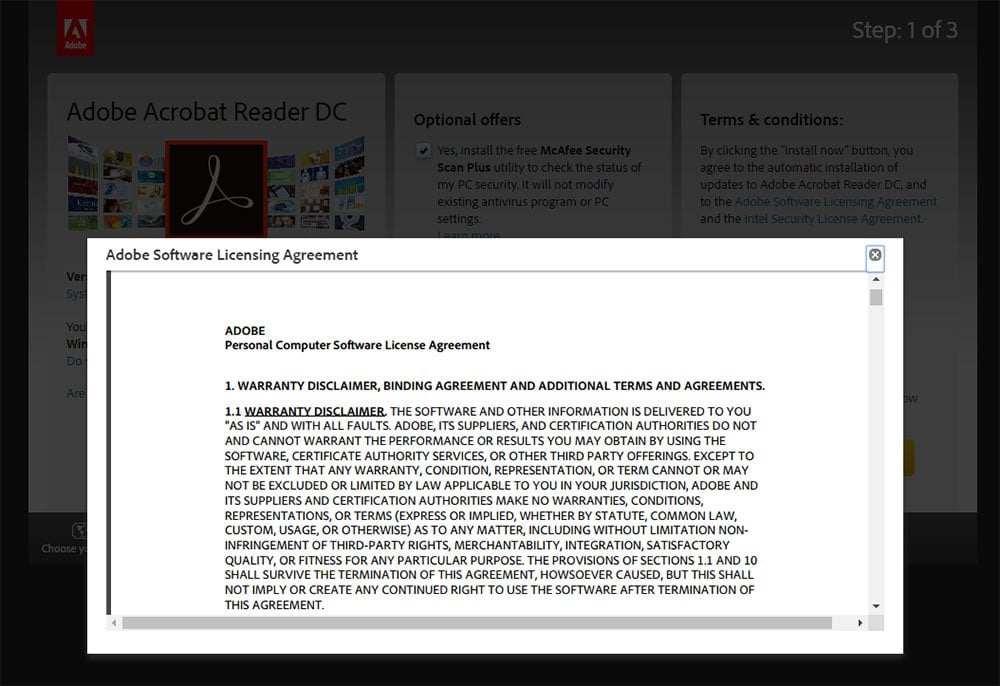
The primary content of a EULA is the licensed uses.
The EULA lists similar rules used in a Terms & Conditions agreement, but the EULA generally addresses a copy of a software product and it often covers topics like reverse engineering and making copies of the software on other computers:
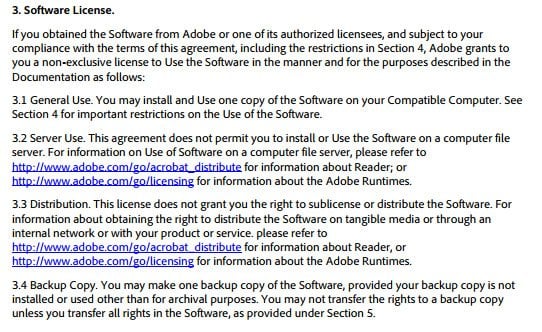
On mobile devices you can access the licensing terms the same way you access a Privacy Policy or Terms & Conditions.
For example, the Nintendo game Super Mario Run has the EULA on the profile page at the "License Agreement" link:
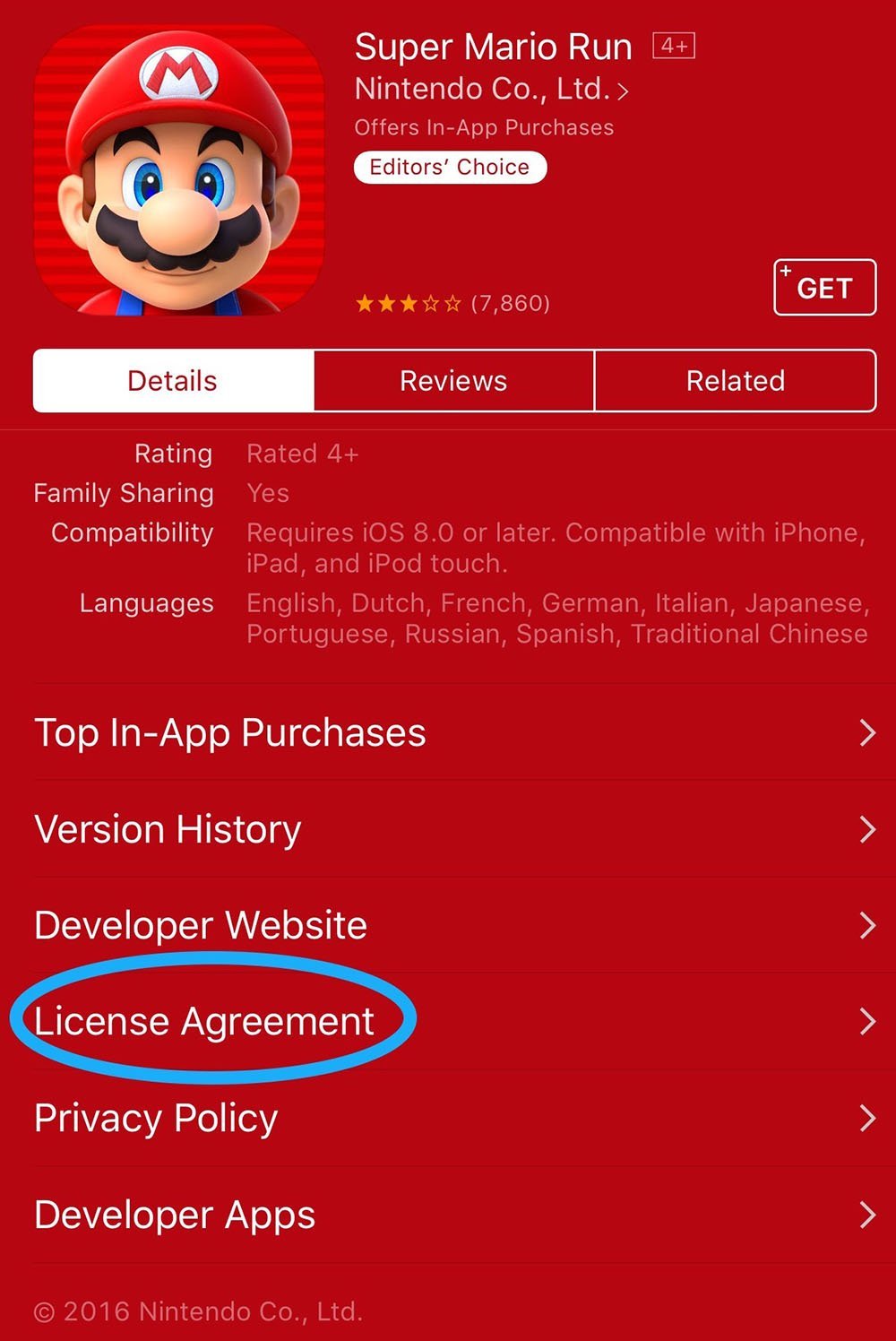
Rather than showing the full text of the EULA of Super Mario Run, you'll see a link to the EULA that you can access online:
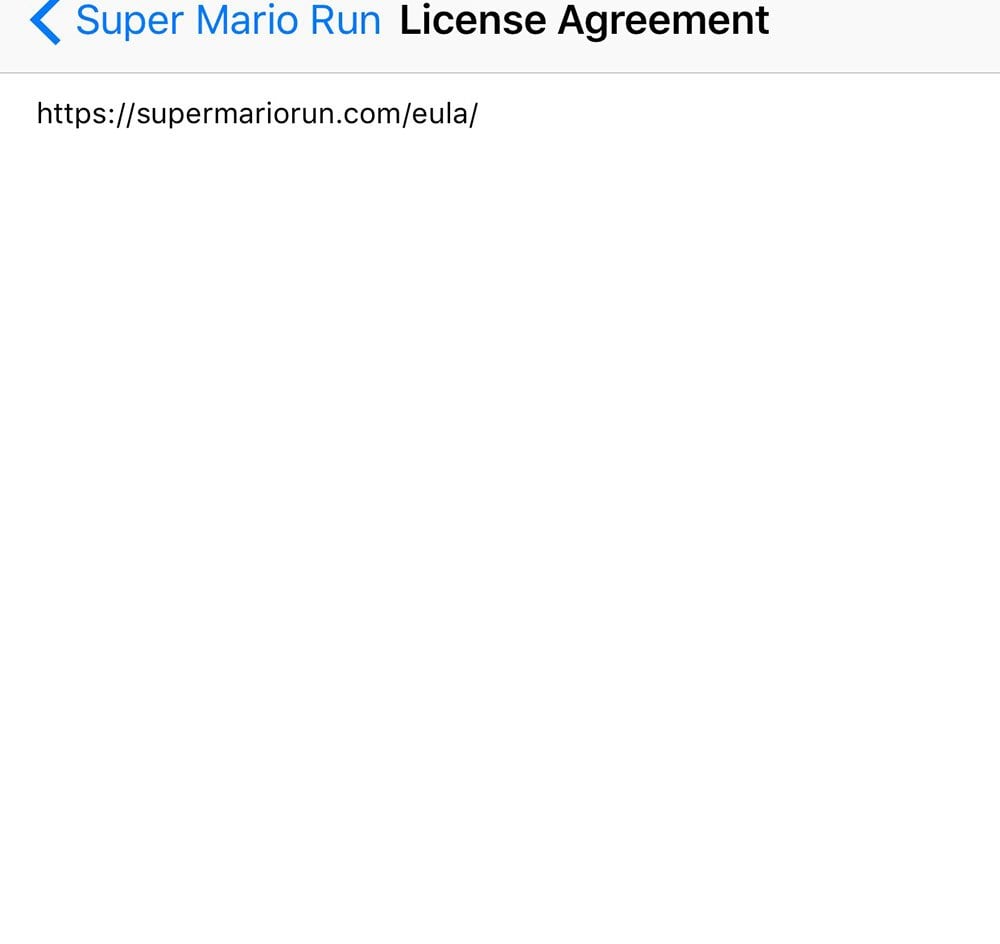
The mobile version of Adobe Acrobat app handles the EULA terms differently. You'll find the link to the EULA agreement of Adobe Acrobat Reader as you do with Super Mario Run.
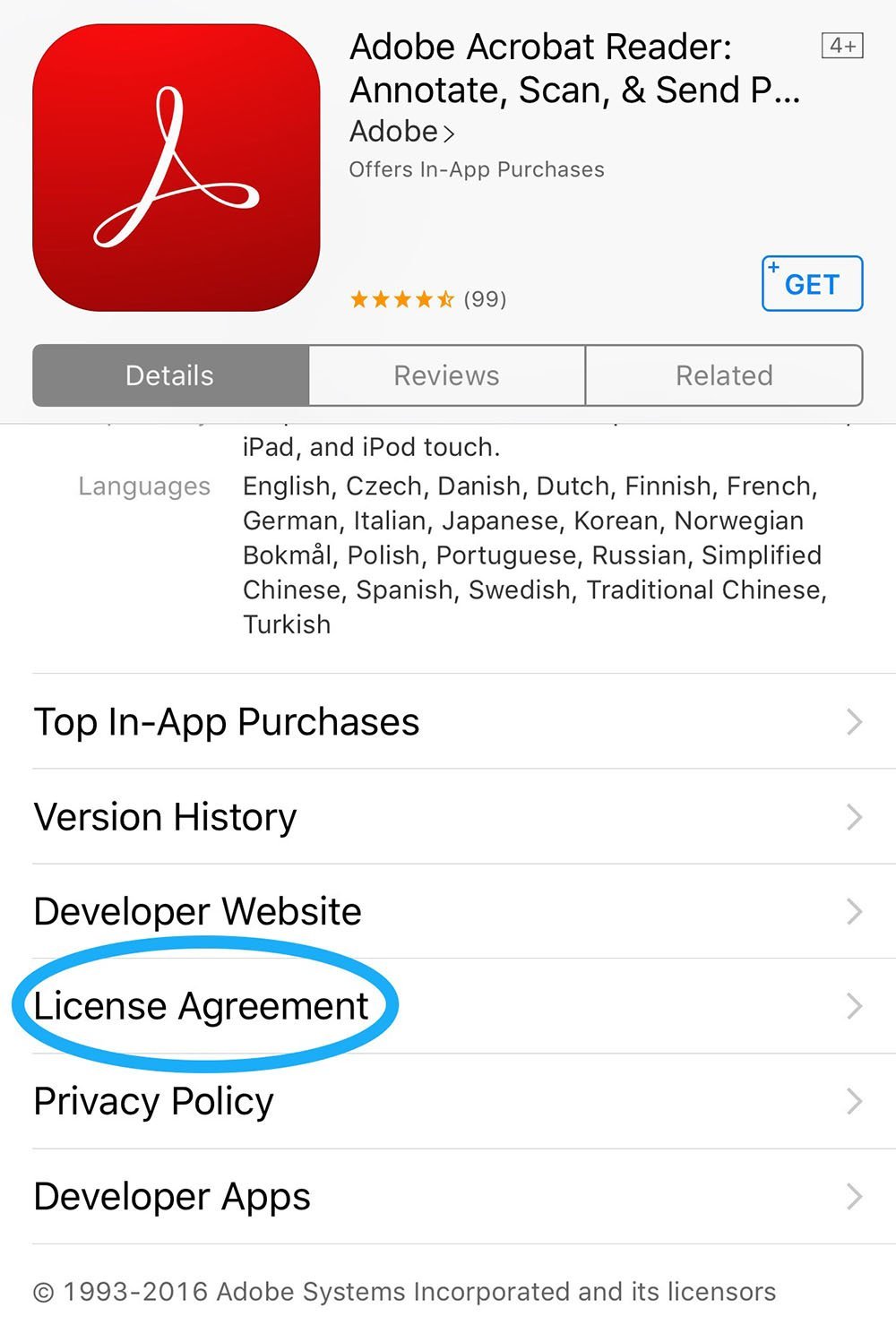
However, the link will give you the text of the Terms of Use for Adobe's mobile app which includes licensing terms:
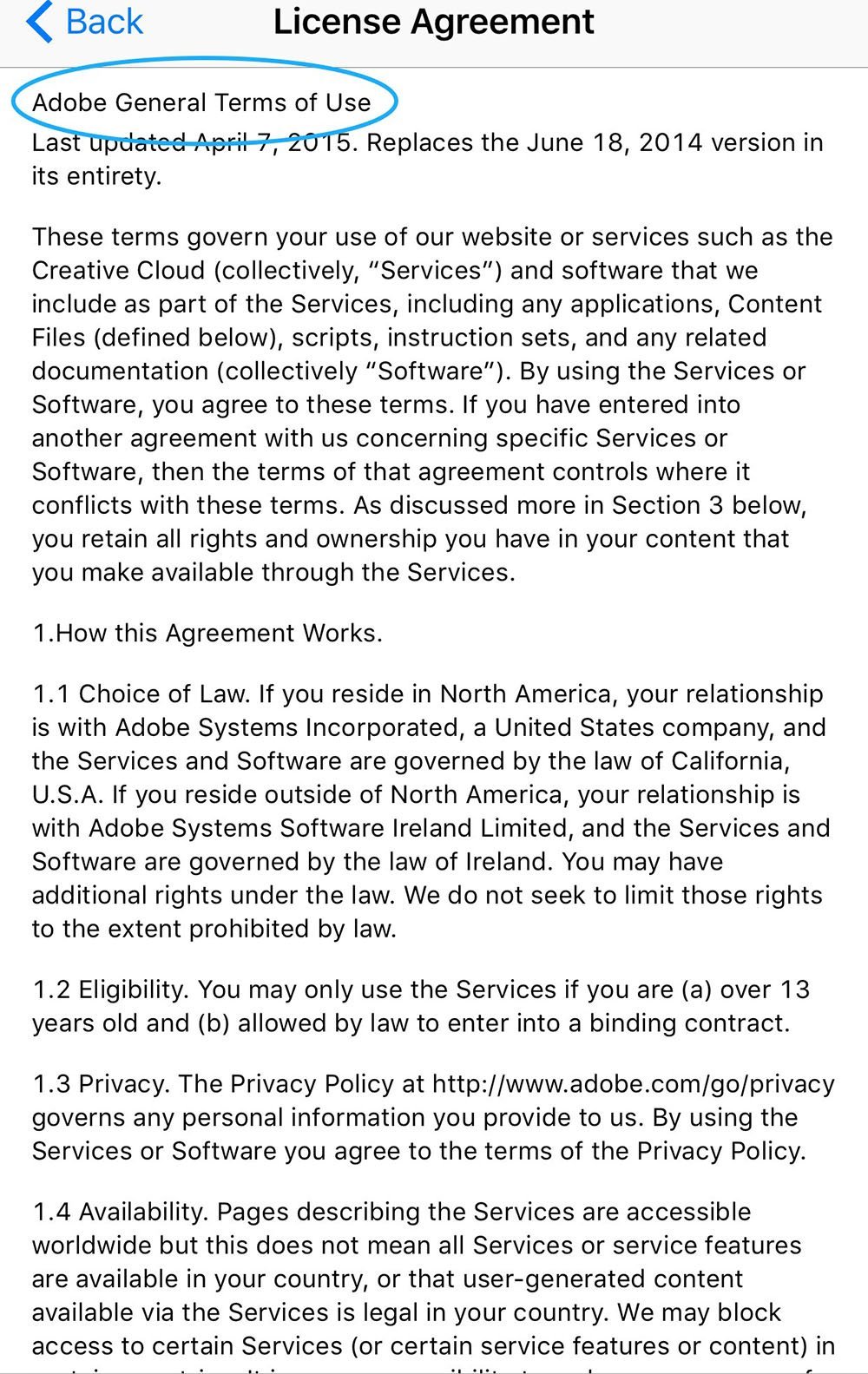
Disclaimer vs. Disclosure
The difference between a disclaimer and a disclosure is easily confused due to the similar sounding names.
- A disclaimer looks to avoid particular liability, like a user taking website information as legal or medical advice.
- A disclosure is the revealing of the information.
Since disclaimers often arise from keeping users informed, the disclosure is often part of a disclaimer. While not all disclaimers involve a disclosure, a disclosure are usually always part of a disclaimer.
Below is an example of a disclosure. It reveals that website links belong to affiliates and visiting them will put a cookie in a user's browser. The disclosure also reveals that these clicks result in revenue for the website.
As noted in the disclaimer, this is part of a rule on disclosures passed by the Federal Trade Commission:
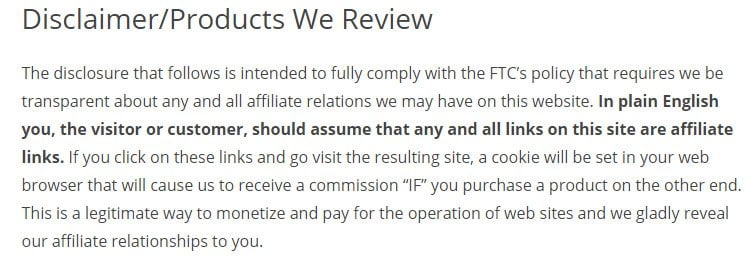
The disclosure portion of this provision reveals to users that providing links and reviews is profitable to the website. However, the disclaimer part waives liability from clicking these links.
Terms & Conditions vs. Terms of Service vs. Terms of Use
There's no difference between a Terms & Conditions, a Terms of Service or a Terms of Use. As indicated above, these are names for the same legal agreement.
The choice of title for the rules, expectations, and limitations you place on your users is determined by your preference.
You find examples of these titles throughout the web. Twitter calls its agreement "Terms of Service":

Instagram prefers to use the name "Terms of Use":

Apple iTunes uses the name "Terms & Conditions":

You can basically choose any name for this agreement that suits your preference.
The only thing to be careful with here is that you consistently use that title throughout all of your content.
User Agreement vs. Terms & Conditions
The "User Agreement" title is a way to distinguish different agreements when there are different types of "Terms & Conditions" agreements for a website or a mobile app.
An example of a company that takes this approach is Upwork. The User Agreement page indicates that it's a contract between users and the company:
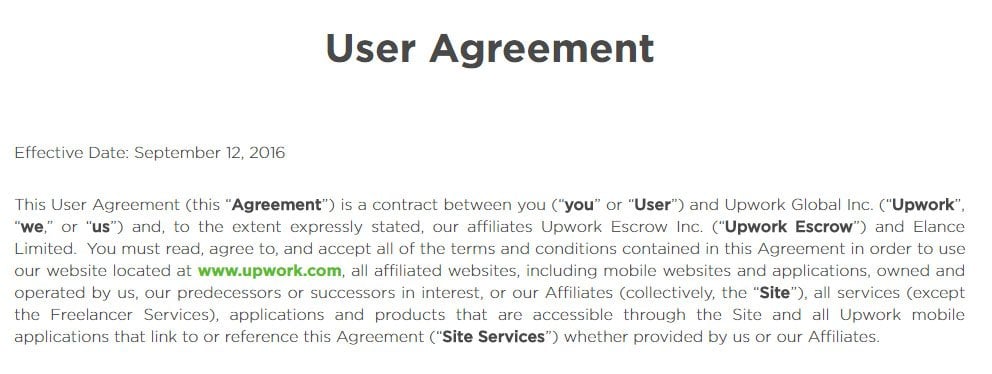
It also contains a "Site Terms of Use" agreement:
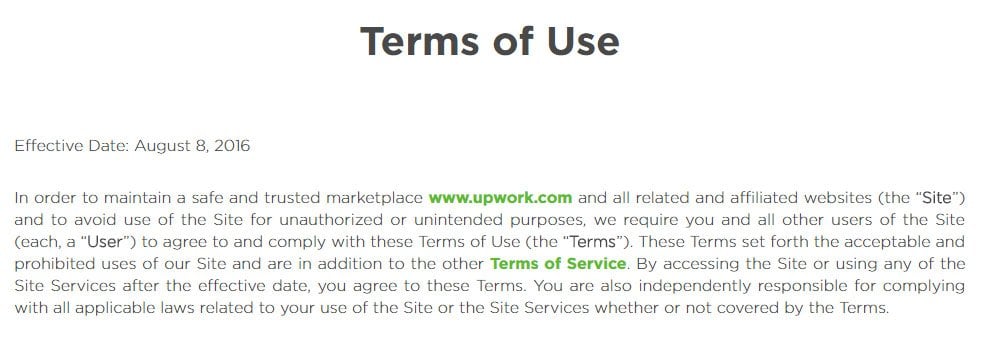
The Terms of Use of Upwork addresses primarily prohibited practices. It lists the prohibited practices in detail and contains enforcement measures.
The User Agreement of Upwork contains different subject matter that addresses expectations for users. There are rules regarding digital signatures, hardware and software required for using the site, and responsibilities when opening an account, again, just to offer examples.
Basically, the User Agreement and Terms of Use cover different topics. Since Upwork has many different types of agreements, it's understandable why documents have different titles:
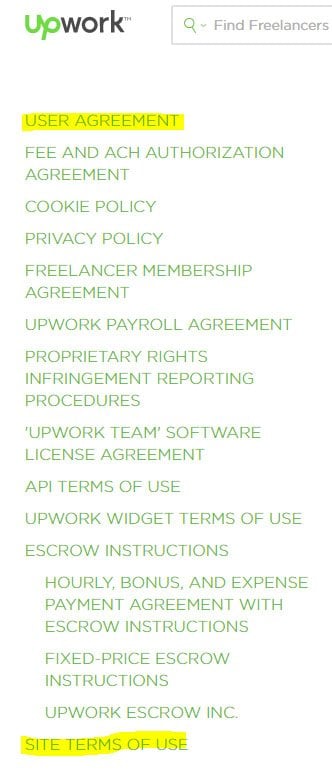
In the case of PayPal, the User Agreement page resembles a normal Terms & Conditions agreement:
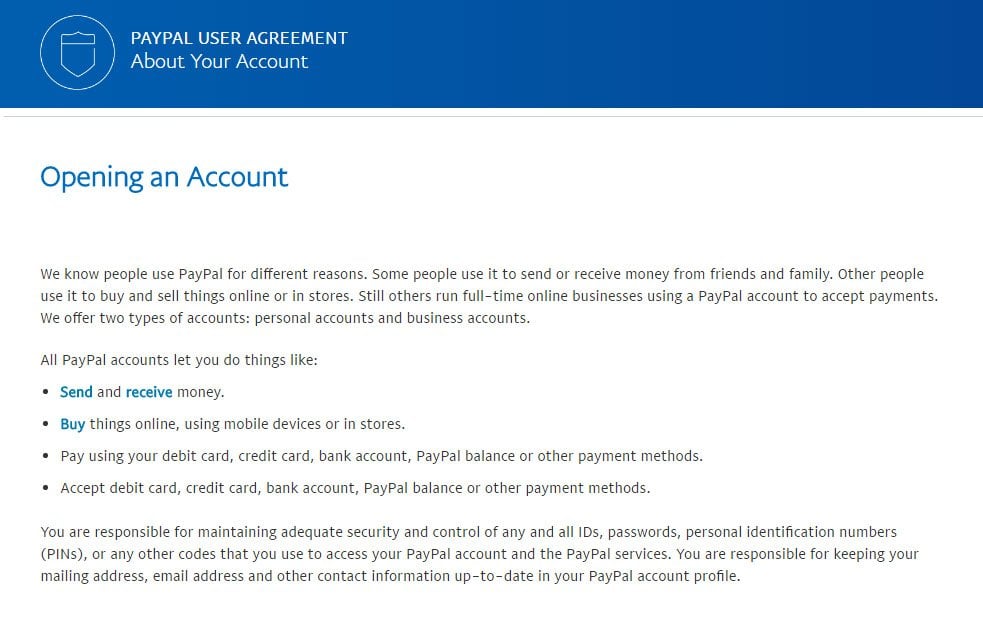
As with Terms & Conditions, Terms of Use or Terms of Service, User Agreement is used either as a title preference for user rules or as a title to distinguish it from other agreements that use the first three titles.

Comprehensive compliance starts with a Privacy Policy.
Comply with the law with our agreements, policies, and consent banners. Everything is included.
